Ordering Tyres Online With Doorstep Delivery
- By Gaurav Nandi
- March 05, 2025
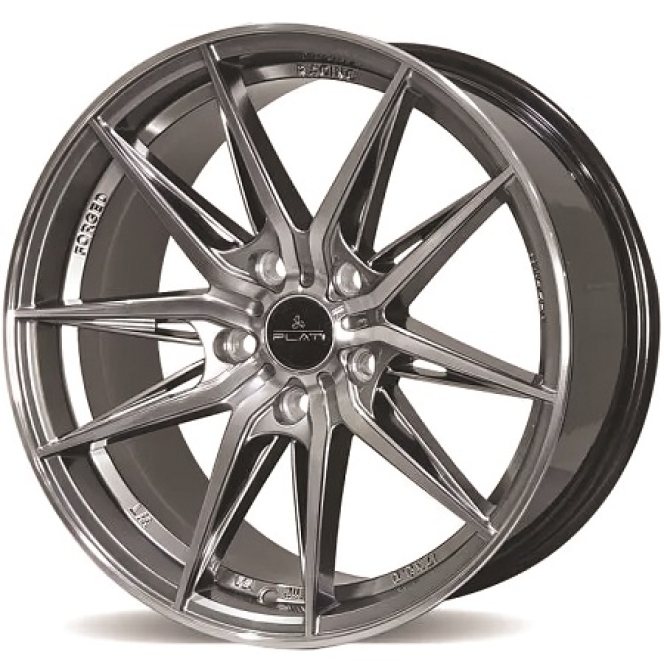
The rise of e-commerce has changed the way how consumers access goods including tyres in India. With 196.3 million units sold in 2023 alone, the tyre industry is booming. Tyreplex, a B2B e-commerce platform, is harnessing technology to simplify tyre distribution, empower dealers and overcome logistical barriers, aiming to reshape the sector.
The interconnected world has practically reshaped our approach to acquiring goods online. From flowers and medicine to industrial equipment, modern consumers can easily acquire goods from the farthest corners of the world by just sitting within the four walls of a home or office.
The Indian tyre landscape is also not unknown to such ease of accessibility. According to an estimate by IMARC Group, 196.3 million units of tyres were sold in 2023 and the numbers are rising. And within such a booming market, Tyreplex is leveraging the power of modern-day technology to not only create virtual marketplace but also break the barriers of logistics.
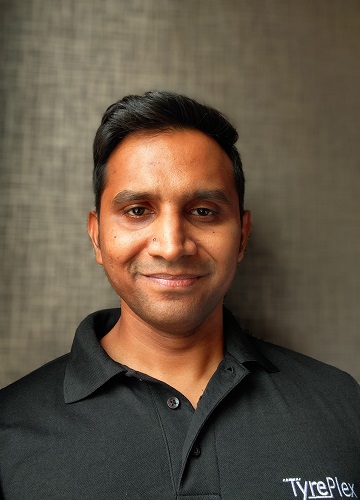 Speaking exclusively to Tyre Trends¸ Chief Executive Officer Puneet Bhaskar said, “The Indian tyre industry is evolving. We are very good at manufacturing and creating products suitable for Indian conditions. But when it comes to distribution, especially at the dealer level, a lot still needs to be done. Around 90 percent of tyre retailers are independent and fall within the unorganised sector. These retailers need to be upgraded and digitised to prepare for the next generation of consumers, who are more digital-savvy and well-informed about products. This is where significant work is needed and it’s something we plan to address.”
Speaking exclusively to Tyre Trends¸ Chief Executive Officer Puneet Bhaskar said, “The Indian tyre industry is evolving. We are very good at manufacturing and creating products suitable for Indian conditions. But when it comes to distribution, especially at the dealer level, a lot still needs to be done. Around 90 percent of tyre retailers are independent and fall within the unorganised sector. These retailers need to be upgraded and digitised to prepare for the next generation of consumers, who are more digital-savvy and well-informed about products. This is where significant work is needed and it’s something we plan to address.”
He added, “TyrePlex, in essence, is a B2B e-commerce company exclusively for tyre dealers. We focus on helping them enhance margins and sales by leveraging technology. Our platform enables dealers to procure more efficiently, manage stores better and handle customer relationships effectively.”
The New Delhi-based company was established in March 2020 by Bhaskar, Chief Product Officer Nikhil Kalra, Chief Technology Officer Jiveshwar Sharma and Chief Operating Officer Rupendra Pratap Singh. During its first six to twelve months, the focus was on laying the foundation by developing its product and technology. As markets began re-opening in 2021, the company rolled out its offering in Delhi NCR. Soon, the platform had around 6,000–7,000 dealers, with 1,200–1,500 actively utilising its services to some extent.
Since early 2022, the company reported being on a growth trajectory. Operating as a hyperlocal business, it expanded in Bengaluru, where it experienced rapid growth, scaling its topline and revenues by nearly 30 times between 2022 and the last financial year.
The executive also indicated that the company had already surpassed the previous year’s figures in the current financial year. Despite operating in only two cities, it projected revenue growth of 50–60 percent for the current fiscal.
TyrePlex does not have a dedicated app for consumers, relying instead on its website and mobile site due to the infinite purchase model. For dealers, however, there is an app available and both registration and usage are entirely free. All tools provided to dealers are free of charge, a policy that extends to consumers as well. Currently, the platform has over 20,000 registered dealers.
ORDERING ONLINE
TyrePlex was initially launched with a B2C approach, drawing on the team’s extensive experience in consumer-facing businesses. However, it became evident that the low purchase frequency and limited repeat business in the tyre market presented challenges for a purely B2C model. To better understand the dynamics of the market, the team even operated a tyre store for a few months. This hands-on experience provided valuable insights into the pain points faced by both dealers and customers. It ultimately highlighted the greater potential of a B2B model as it became clear that dealers encountered significant challenges that the company could effectively address.
“While we still maintain a B2C presence to help our dealers attract customers, our primary focus is on the B2B segment. We empower them by offering them a comprehensive platform to procure tyres easily. Dealers can access all major brands and categories, covering cars, bikes, scooters, trucks, buses and tractors on a single platform. Our unique value proposition lies in our efficiency. We fulfil 90 percent of orders on the same day with 50-60 percent delivered within 2-3 hours. Moreover, our model is entirely asset-light. We don’t own inventory or warehouses. Instead, we manage procurement, delivery and payment collection, ensuring a seamless and efficient experience for dealers,” said Bhaskar.

The company aggregates supply and demand. When an order is placed, the demand is sent to a network of pre-tagged suppliers integrated into the system. This process is entirely driven by technology and happens within seconds. Once the demand is shared with the suppliers, the technology platform evaluates key factors such as price, margins, delivery costs and logistics costs to determine the most suitable supplier to fulfil the order. The system uses algorithms to decide the optimal procurement source ensuring the decision aligns with margin goals and delivery timelines.
In addition to the technology driving the procurement process, TyrePlex has built robust back-end systems incorporating machine learning and artificial intelligence to enhance operational efficiency. These technologies continuously improve as more data is gathered, allowing the company to refine its decision-making processes over time.
The company sells around 15,000–16,000 tyres a month and has a modest workforce of 50 people.
DRIVING WITH DATA
Tyreplex’s data-driven approach is helping to reshape the tyre industry in India by providing deep insights into market trends and customer behaviour, which directly impacts distribution strategy. “We collect and triangulate data from various sources including our website, where we monitor customer behaviour such as the areas from which customers are coming, what kind of tyres they’re buying and the preferred brands. This real-time, organic consumer data gives us valuable insights into regional demand, brand preferences and tyre sizes in different parts of India,” averred the executive.
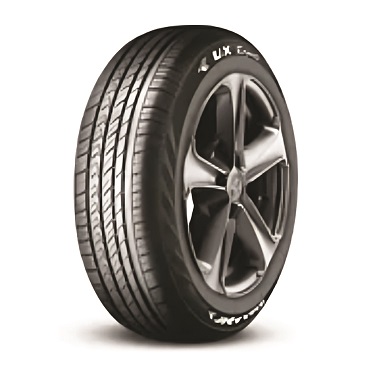 “Additionally, we gather B2B data by tracking tyre sales including pricing and sales patterns. A third layer of data comes from the invoices generated by dealers through our platform, providing us with insights into their actual sales transactions. These insights with macro data help predict demand and optimise our distribution strategies. For instance, we shared these insights with Michelin during their visit to India, and they were so impressed that they partnered with us for B2B distribution in Delhi NCR,” he added.
“Additionally, we gather B2B data by tracking tyre sales including pricing and sales patterns. A third layer of data comes from the invoices generated by dealers through our platform, providing us with insights into their actual sales transactions. These insights with macro data help predict demand and optimise our distribution strategies. For instance, we shared these insights with Michelin during their visit to India, and they were so impressed that they partnered with us for B2B distribution in Delhi NCR,” he added.
TyrePlex is exploring opportunities to expand its product offering into other categories. A key area of focus is tyre recycling, particularly in light of the government’s mandate for 100 percent extended producer responsibility in the sector. The reverse supply chain for car and bike tyres remains fragmented wherein the company aims to leverage its existing supply chain to streamline and improve this process.
The company is also exploring opportunities in other categories like accessories, batteries and garage-related products. “Around 15-20 percent of our dealers already sell accessories or batteries and many of them also operate their own garages. While expanding into these categories is projected to be a few years down the line, our immediate priorities are geographical expansion, entering the tyre recycling market and eventually diversifying into additional product categories,” revealed Bhaskar.
UPCOMING LAUNCHES
The company is continually enhancing its technology stack with a particular emphasis on artificial intelligence (AI) and machine learning (ML). On the dealer side, the company is introducing computer vision to simplify inventory management. Soon, dealers will be able to scan or photograph their invoices, removing the need for manual entry into the system. Additionally, TyrePlex is developing customer relationship management (CRM) tools for dealers to help them provide targeted services such as alignment or balancing, based on customer history.
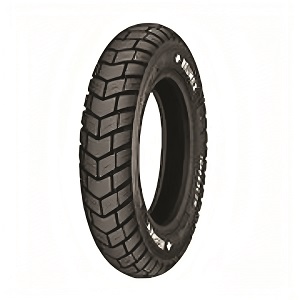 On the consumer side, TyrePlex is working on products that leverage AI and ML to enhance the customer experience. One such product in development will allow consumers to photograph a tyre to determine how much tread life remains, helping them make informed decisions about when to replace their tyres. These consumer-facing features are expected to be launched within the current financial year.
On the consumer side, TyrePlex is working on products that leverage AI and ML to enhance the customer experience. One such product in development will allow consumers to photograph a tyre to determine how much tread life remains, helping them make informed decisions about when to replace their tyres. These consumer-facing features are expected to be launched within the current financial year.
Moreover, to address the significant knowledge gap within consumers, TyrePlex is focusing on educating and empowering consumers by expanding its content library on the website and introduce more educational tools.
EXPANDING FOOTPRINT
Alluding to the plans to expand footprint, the executive noted, “We are planning to expand into 25 of India’s top cities and the goal is to be present in at least four to five additional cities by the end of FY26. The cities we are targeting for expansion include Hyderabad, Chennai, Ahmedabad and Mumbai. After that, we plan to extend our reach to other cities based on our market analysis.”
“Our strategy is to focus on cities with high vehicle density and a strong concentration of digital-native dealers as these cities offer a conducive environment for our business. Once we are present in these top cities, we will use them as central hubs to fulfil orders for surrounding cities within a 50-100 km radius. This will allow us to streamline our supply chain and make deliveries more efficient,” he added.
He explained that to overcome the unique challenges of each market, the company has developed a playbook based on experience. Acknowledging that the company will face challenges such as regional preferences, local competition and logistical nuances, he noted that the solutions will be based on data accumulated through website and other sources.
On the industry side, he noted the need for improvement of distribution channels and creation of a more accessible supply chain. Building a strong ecosystem that connects dealers, brands and other stakeholders is crucial for fostering growth and ensuring greater efficiency in the tyre market. Looking ahead, the company plans to continue strengthening its ecosystem with dealers, brands and stakeholders. The goal is to position the company for an IPO on the main board within the next five years, setting the stage for long-term growth and continued market leadership.
Trelleborg Tires Retains Crown As Brazil's Best Agriculture Tyre
- By TT News
- December 07, 2025

For the second consecutive year, Trelleborg Tires has earned the prestigious title of Best Agriculture Tyre at the 22nd Visão Agro Brazil Awards. This 2025 accolade, presented during a ceremony in Ribeirão Preto, highlights the company’s dedicated role in advancing Brazilian agribusiness through technological leadership and a commitment to sustainable practices. The award was received on behalf of the company by Fábio Metidieri, Agri Sales Director for Yokohama TWS Brasil.
Central to this achievement is Trelleborg’s ongoing innovation, particularly the expansion of its ProgressiveTraction technology within the TM tyre series. This engineering, featured in models from the row-crop TM600 to the high-horsepower TM1000, utilises a dual-edge lug design. The tread operates progressively on the soil to enhance traction, promote self-cleaning and minimise vibration. The resulting benefits include improved operational efficiency, increased tyre durability and superior soil protection, directly supporting farmers’ goals for greater productivity and environmental stewardship.
The company’s deep roots in Brazil, supported by a specialised local team, rigorous field testing and strong manufacturer partnerships, ensure its solutions are finely tuned to regional demands. This local infrastructure allows for responsive technical service and keeps product development closely connected to the practical challenges faced by the agricultural sector. The Visão Agro Brazil Awards, judged by a panel of industry executives and researchers, serve as a recognised benchmark for innovation and performance, making this recognition a significant testament to Trelleborg Tires’ impact on the country’s farming landscape.
Metidieri said, “Receiving this award at such a prestigious event once again reinforces our commitment to Brazilian agriculture. Our goal is to keep advancing in technology and field performance, ensuring that every Trelleborg tyre delivers real value – helping farmers operate more efficiently, sustainably and profitably. This award reflects the trust placed in our team and our products by professionals throughout the sector. It strengthens our commitment to delivering technologies that address local challenges and help shape the future of Brazilian farming.”
Premium Makeover
- By Sharad Matade
- December 05, 2025
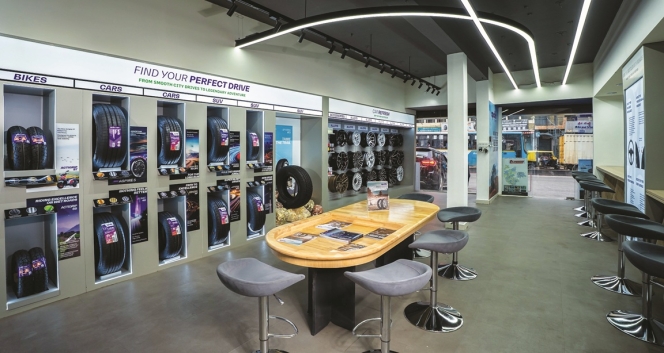
India’s tyre retail industry is undergoing a dramatic makeover, moving far beyond the cluttered workshops and transactional buying of the past. Fuelled by rising demand for premium vehicles, digital-first customers and stronger export momentum, tyre makers are transforming retail spaces into sleek, immersive experience centres. What was once a routine utility purchase is rapidly evolving into a premium, advisory-led mobility experience designed for a new generation of motorists.
India’s tyre retail scene is shifting gears, leaving behind the era of crowded workshops and impersonal counters. In their place, manufacturers are rolling out sleek, thoughtfully designed, tech-powered spaces that echo the luxury of high-end car showrooms. What started as a few bold pilots in big cities has quickly become the go-to playbook for tyre brands eager to win over a new generation of savvy, comfort-loving, digital-first customers.
From urban to rural areas, this transformation reveals a profound change in how Indians approach mobility. Today’s motorists – especially those behind the wheel of SUVs, luxury sedans and electric cars – want more than just a tyre swap. They crave expert advice, a polished atmosphere and a shopping experience that reflects the elegance of their vehicles. Once a utilitarian afterthought, tyre retail is now emerging as a coveted part of the automotive journey.
Strong OEMs and replacement demand in both domestic and export markets underpin the transition.
In FY 24-25, tyre exports from India surged by nine percent year-on-year to INR 251 billion, according to data released by the Ministry of Commerce. With an estimated annual turnover of INR 1 trillion and exports exceeding INR 250 billion, the Indian tyre industry stands out as one of the few manufacturing sectors in the country with a high export-to-turnover ratio.
Though tyre exports have hit a speed bump due to higher US tariffs on select categories of Indian tyres compared to those of competing nations, the long-term prospects for the Indian tyre industry remain strong. According to a joint report by ATMA and PwC India titled ‘Viksit Bharat 2047: Vision and Roadmap for the Indian Tyre Industry’, India’s tyre production volumes are projected to grow nearly fourfold by 2047, while industry revenues are expected to expand almost 12 times to about INR 13 trillion.
Against this backdrop, tyre makers are modernising aggressively to retain customers and build a more profound emotional affinity. The broad shift is visible in how retailers are reinventing their spaces. Lounges with crafted lighting, upholstered seating, minimalist décor and large digital walls are replacing traditional steel racks and dusty counters. Informational murals and heritage display trace decades of tyre innovation, strengthening brand storytelling. Stores increasingly feature curated experience zones where customers can explore tyre technologies, EV-compatible profiles, eco-friendly materials and performance characteristics through visual displays and interactive tools.
A clear sign of this trend is the rise of personalised, advisory-led engagement, replacing the old dependence on technicians. Retailers now profile driving habits, terrain usage, daily distance and vehicle type to recommend tyres customised to each consumer’s pattern. This service-led model is shifting the customer’s mindset from price-first decision-making to long-term value evaluation.
The new premium outlets are designed to deliver a lifestyle-driven, hospitality-grade experience rather than a traditional tyre shop visit. Customers receive personalised mobility recommendations tailored to their vehicle, driving style and needs, supported by smart service innovations like intelligent product selection, quick-fit services and digital scheduling. The space also acts as a community hub for driving enthusiasts, creating a connected ecosystem around the brand. With lounge-style comfort, immersive storytelling and specialised tyre and service packages for luxury and performance vehicles, the outlet blends convenience, premium care and brand-centric offerings into an elevated customer experience.
“Customer experience at the point of sale is another branding exercise poised to change buyer characteristics. Multi-brand outlets often commoditise the tyre-buying experience. That’s why companies are launching exclusive brand outlets with curated customer experiences. Over the next decade, new delivery models will emerge,” said Kavan Mukhtyar, Partner and Leader – Automotive, PwC India.
Apollo Tyres articulates this change as a move towards lifestyle-led retailing. Its new super-premium outlets have been built not as showrooms but as emotionally resonant spaces.

Udyan Ghai, Group Head of Marketing at Apollo Tyres, explained that the company’s new retail architecture is anchored in long-term strategic priorities: “Our move to a lifestyle-led, immersive tyre retail format is driven by our own desire for premiumisation and category leadership. We are looking at elevating tyre retail in India by setting new benchmarks and shifting from commodity selling to a premium, lifestyle-driven experience.”
He said the brand aims to ‘emotionally engage with customers, offer tailored solutions, build a community of driving enthusiasts and tap into premium segments – all while delivering a differentiated, modern retail experience’.
Ghai believes retail ambience plays a decisive role in influencing perception. “A relaxed and well-designed lounge signals comfort, trust and premium value,” he said, adding that such environments elevate tyres from a mundane requirement to a core element of vehicle care and identity.
Digital transparency, he believes, is the second pillar of modern tyre retail. “Digital systems ensure transparency and help demystify tyre selection – tread patterns, speed ratings, durability and fitment. Consumers feel less dependent on a technician’s word and more in control, which boosts their confidence and perceived fairness,” Ghai said.
Customers today are inundated with choices, and digital systems, he said, turn tyre buying into an ‘informed, personalised decision’, comparable to selecting a smartphone, a pair of performance shoes or even a detailed insurance plan. According to Ghai, this new retail model is ‘a strategic investment in the future of mobility retail’, designed to be scalable and to support community-building events, workshops and enthusiast interactions. As India moves towards EVs and connected cars, he said these premium outlets will provide EV-focused tyre expertise, interactive digital tools and personalised recommendations that appeal to younger, digitally savvy motorists.
CEAT shares a similar philosophy. Its national retail revamp focuses heavily on digital immersion, consistent messaging and design-led layouts. Lakshminarayanan B, the company’s Chief Marketing Officer, said the modernised CEAT Shoppes are fundamentally reshaping the category.

“The modern layouts and digital integration in CEAT Shoppes are revolutionising the tyre-buying experience, making it more experiential and customer-centric,” he said, adding that these updated outlets elevate the experience, build trust through uniform communication and drive decisions by reducing ambiguity around features and value.
Lakshminarayanan highlighted CEAT’s attempt to harmonise customer experience across demographics: “The approach in urban markets through premium stores, product offerings and services is to create access and aspiration for premium customers. The same is replicated in upcountry markets also.”
The CEAT Executive said the company is building for a future where personalisation will be the defining characteristic of tyre retail. “CEAT is focused to drive the future of tyre retail through end-to-end personalisation,” he said.
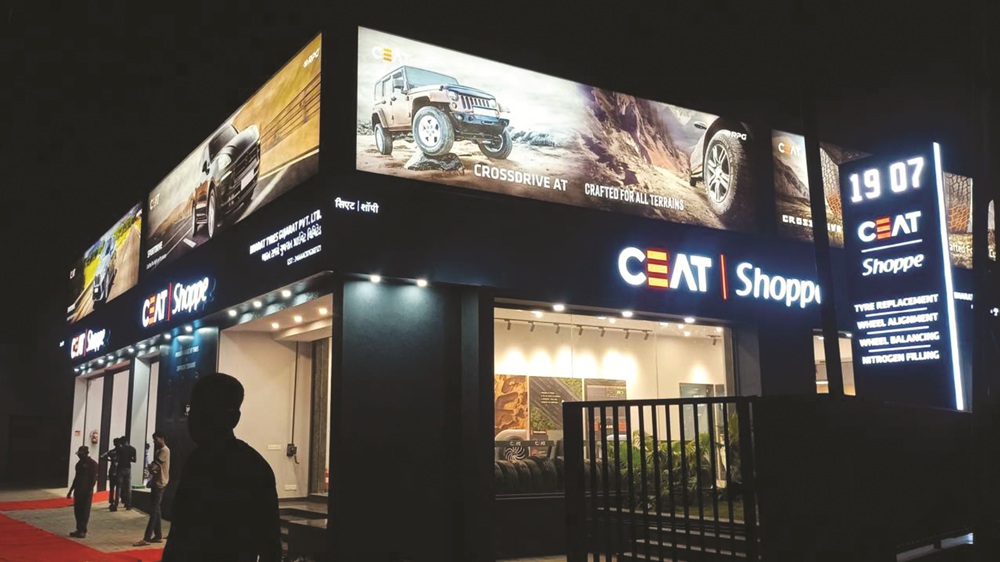
As experiential retail takes hold, service portfolios inside tyre stores are expanding faster than ever. Advanced wheel balancing, laser-driven alignment systems, nitrogen inflation, premium alloy wheel installations, EV-oriented tyre consultations, digital appointment scheduling and real-time tyre-health diagnostics are now standard. Many outlets also provide car detailing, interior cleaning, ceramic coating, PPF application, brake checks, battery inspections and multi-point vehicle health reports, making them full-fledged mobility centres.
Global players have pushed the envelope even further. Michelin’s 25,000-square-foot Experience Store in Nashik features a heritage wall and innovation displays showcasing electric mobility, materials science and environmental responsibility. It houses precision wheel-alignment bays, detailing studios, and accessory galleries. “We are proud to unveil Michelin’s first Experience Centre in India. The sole purpose of this store is to go beyond traditional tyre retail and provide customers with an immersive experience of the brand,” said Shantanu Deshpande, Managing Director of Michelin India.
Continental Tyres is also strengthening India’s premium retail ecosystem through its CPD outlets, which include ambient lounges, diagnostic equipment, premium alloy wheels and digitally enabled guidance. “With our new CPD store in Indore, we bring Continental’s promise of safety, innovation and comfort closer to Madhya Pradesh’s clients,” said Samir Gupta, Managing Director of Continental Tyres India. He added that the brand’s ‘In the Market, For the Market’ approach is central to its retail expansion strategy.
Even in rural markets, tyre retail is becoming more formalised, structured and service-oriented. JK Tyre’s ‘Steel Wheels’ format is targeted at towns with populations under 100,000 and offers standardised layouts, value-added services, best-in-market pricing and instant claim facilities. “Our Rural expansion programme will help us reach the interiors of the real Bharat that is economically vibrant but often underserved. We are not just building retail points; we are also enabling entrepreneurship and access,” said Managing Director Anshuman Singhania.
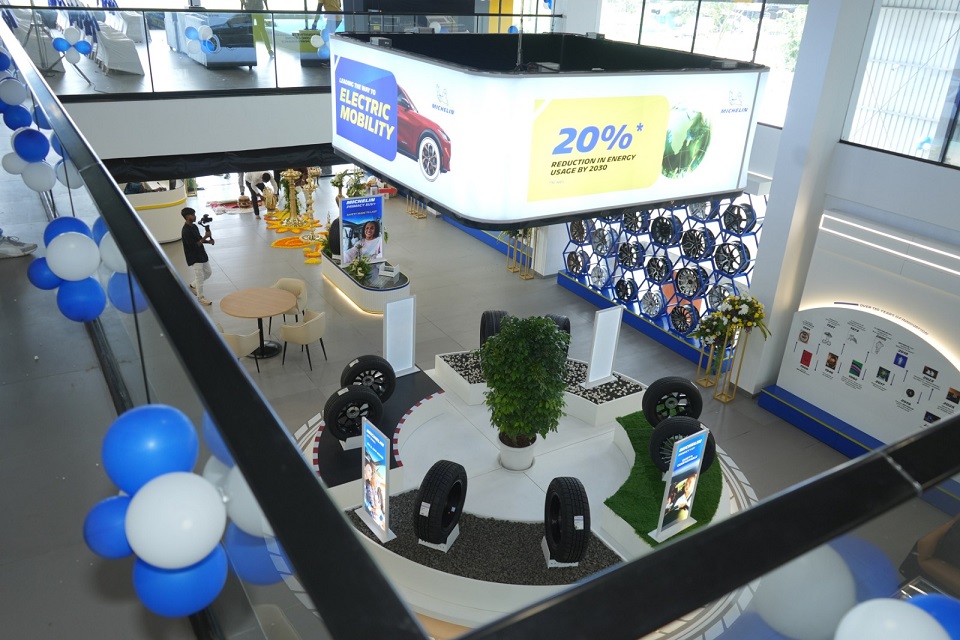 Together, these developments mark a decisive shift in how tyre brands engage customers. Tyre stores are increasingly functioning as lifestyle environments, designed for comfort, informed decision-making, personalisation, transparency and community. The industry is moving away from a product-first mindset to a customer-experience-led philosophy.
Together, these developments mark a decisive shift in how tyre brands engage customers. Tyre stores are increasingly functioning as lifestyle environments, designed for comfort, informed decision-making, personalisation, transparency and community. The industry is moving away from a product-first mindset to a customer-experience-led philosophy.
As premium cars, SUVs and EVs become mainstream, and as younger motorists prioritise digital empowerment and ambience, tyre retailers are aligning with these new expectations. India’s tyre makers are building a retail landscape where experiential engagement, technology integration, service breadth and emotional connection define long-term brand success.
For an industry long anchored in grease, metal and functionality, the transformation is profound. Tyre retail in India is no longer just about fitment; it is becoming a premium mobility experience, curated for a generation that demands clarity, comfort and an elevated relationship with every aspect of vehicle ownership.
Kumho Tire To Build First European Plant In Poland With $587mln Investment
- By TT News
- December 05, 2025
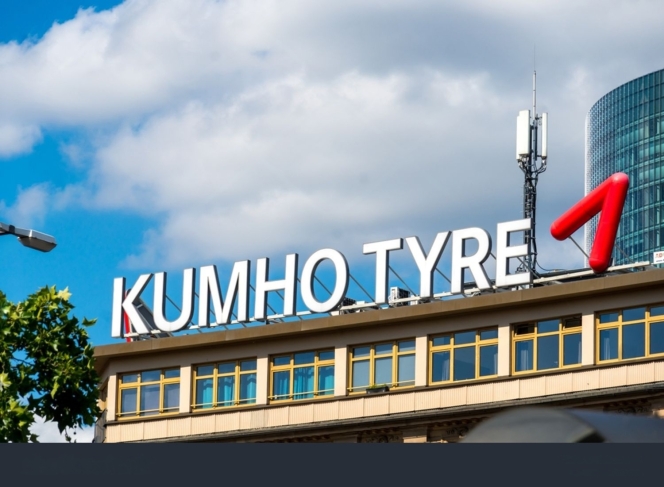
Kumho Tire will establish its first European manufacturing plant in Poland’s Opole region as the South Korean company seeks to expand its position in one of the world’s largest tyre markets.
The group said the factory is scheduled to begin initial operations in August 2028, subject to investment approval and licensing. Kumho plans to produce 6m units annually in the first phase and expand capacity in line with demand. Total planned investment is USD 587 million.
Kumho has spent recent years evaluating multiple European locations, including Poland, based on logistics, labour availability, infrastructure, market access and investment incentives. The company said Opole was selected as the optimal site owing to supply-chain stability within the EU and the region’s supportive operating conditions.
Europe accounts for about a quarter of global tyre consumption and is home to several major automotive manufacturers. The region represented roughly 26.6 per cent of Kumho’s sales last year. The company has previously relied on exports to serve European customers, which it said limited its competitiveness in the market.
The new plant is intended to strengthen Kumho’s ability to supply high-value-added products, including high-performance and larger-diameter tyres, to European vehicle makers.
Kumho currently operates eight production sites across South Korea, China, the US and Vietnam, with combined annual output of 65 millionunits. The Polish plant will complete what the company describes as a production network spanning Asia, Europe and North America.
Jung Il-taek, Kumho Tire’s Chief Executive, said: “The European market occupies a very important strategic position in the global tire industry,” adding that “Kumho Tire will go beyond simple exports and dramatically enhance premium brand value by strengthening quality and service competitiveness through local European production and supply.”
Tyre Stewardship Australia Appoints David Fraser As Chair As David Spear Steps Down
- By TT News
- December 04, 2025
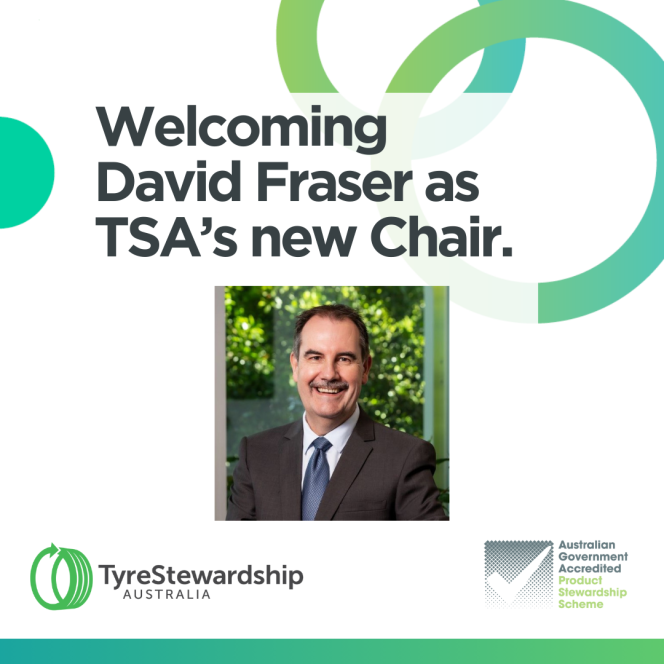
Tyre Stewardship Australia has appointed David Fraser as its new chair, succeeding David Spear after nine years in the role during a period of regulatory and industry change in the country’s tyre-recycling sector.
Spear’s departure closes what the organisation described as a challenging yet incredibly important chapter for its efforts to advance circular outcomes for Australia’s end-of-life tyres. TSA, an industry body backed by government and sector participants, oversees the national stewardship scheme and promotes recycling and re-use pathways for waste tyres, an area facing increasing scrutiny under Australia’s environmental and product-stewardship policies.
In a statement, TSA said it “thank[s] him for his unwavering support and dedication to driving circular outcomes for Australia’s end-of-life tyres”.
Fraser, a TSA director since 2023, brings experience in governance and compliance. He joins at a time when Australian states are tightening environmental standards and seeking to reduce landfill through higher recycling targets. TSA said Fraser has “deep understanding of our strategy, our challenges and the opportunities ahead”.
The organisation added: “We look forward to his leadership as TSA enters its next chapter.”
TSA also expressed appreciation to Spear “for your contribution and support of our mission”, and welcomed Fraser, saying it is “excited and ready for what lies ahead”.







Comments (0)
ADD COMMENT